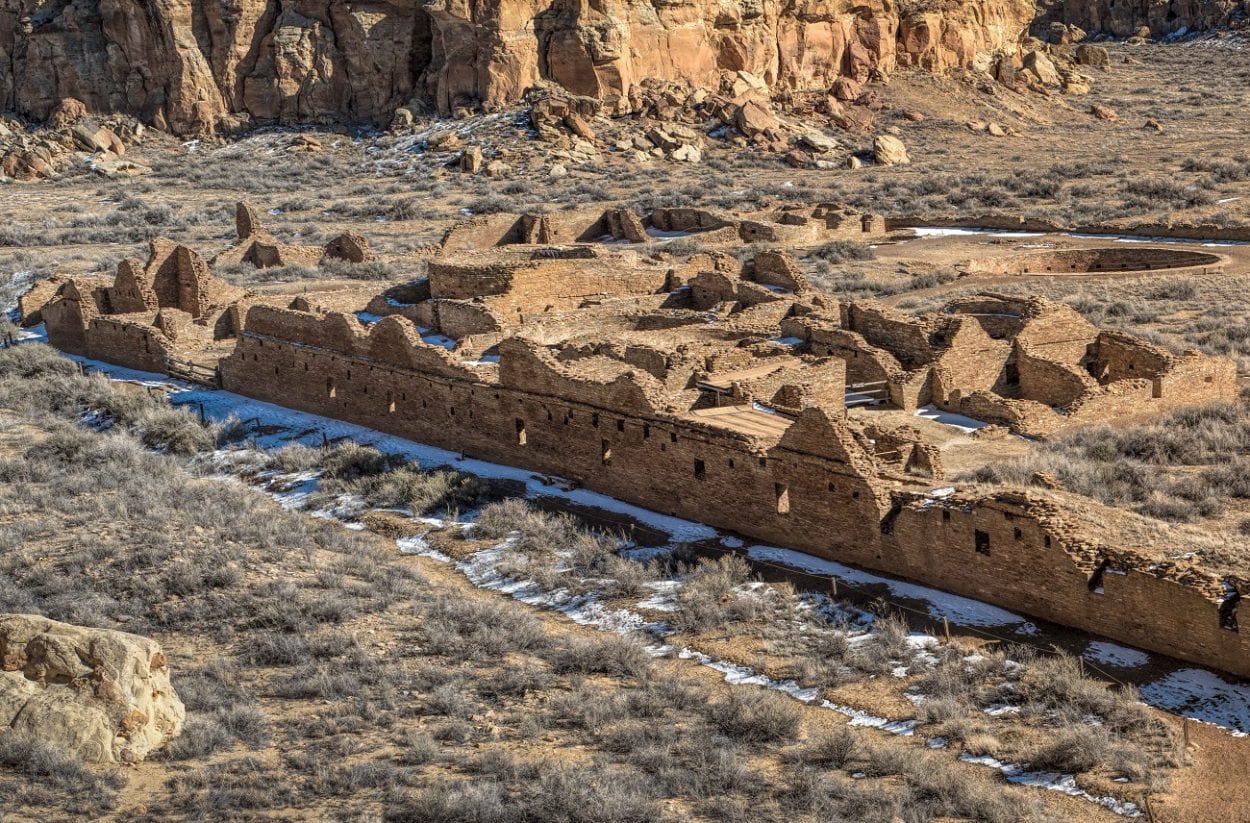Chetro Ketl is an archaeological site, and the ancient ruins of an Ancestral Puebloan settlement, located in the Chaco Culture National Historical Park, New Mexico, United States of America.
The Puebloans or Pueblos, were an ancient Native American culture that developed a series of major construction projects across Utah and parts of Arizona, New Mexico, and Colorado.
The Chaco Culture National Historical Park is one of the most concentrated centres of the Puebloan culture (defined locally as the Chacoans) that built immense complexes known as “Great Houses”.
Chetro Ketl was built over an extended period beginning in AD 990, with construction largely completed by AD 1075. The plan of the complex resembles a D-shaped structure covering nearly 3 acres and consists of 400 rooms with several large kiva used by Puebloans for rites and political meetings, often associated with the kachina belief system.
The purpose of the great house is debated by academics, with some suggesting that it served as a ceremonial centre during times of rituals in the larger Chacoan system for priests and pilgrims from the outlying communities. It is also proposed that the site served as a palace by Chacoan royalty, or to emphasise astronomical alignments with the other Great Houses.

The surrounding area was heavily wooded, with researchers estimating that the Chocoans felled nearly 16,000 trees during construction leaving vast areas infertile. By AD 1130, the rains had diminished and the maize crops that the Chacoans depended on had begun to fail.
The region further suffered from the effects of a devastating fifty-year drought, that forced the Chacoans to end more than six hundred years of occupation and migrate away from the Chaco Canyon to outlying communities such as Mesa Verde, Salmon, and Aztec in New Mexico.
Chetro Ketl was most probably known to the Native Americans living in the vicinity, but its rediscovery was in 1823 by the governor of New Mexico, José Antonio Vizcarra, who was conducting military campaigns against the Navajo.
The United States started exploring the region following the Mexican–American War of 1846–48 and the acquisition of the New Mexico Territory. During a military campaign against the Navajo in 1849, Lieutenant James Simpson of the United States Army Corps of Engineers conducted the first preliminary study of the monument, with the first scientific investigation of Chaco by Canyon Richard Wetherill in 1895.
Header Image Credit : John Fowler – CC BY 2.0





